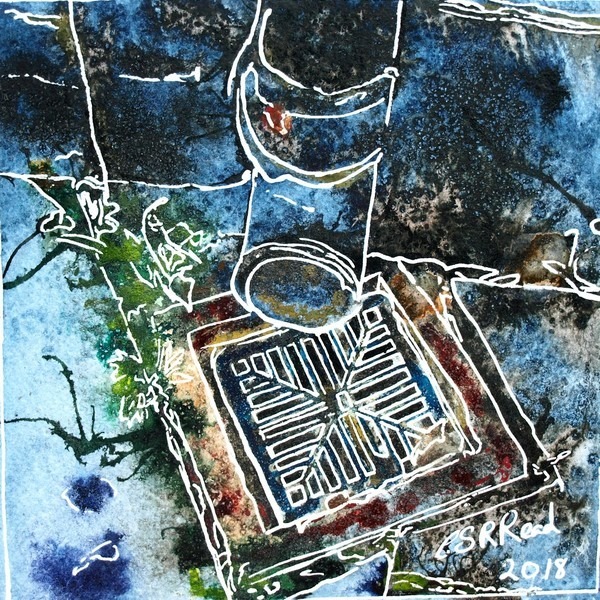Drain painting is not the usual province of art. We don’t seek them out as a drawing subject. They’re not revered as objects of beauty. Quite the reverse in fact. We hide them from sight. Divert focus away from them, unless we have to deal with a blocked one. Drains are an essential part of our lives commonplace, everywhere, mundane. We need them to do their job and not be noticed. We don’t expect them to be pretty or to attract our attention as we go about our daily lives. They are just there.
Looking around I saw lots of uniform looking drains.
I suspect, even if you know Buckingham well, you won’t remember this one.
I was attracted to the angle against the wall, not flat and square but tilted like a diamond. A casual attempt at being visually attractive? Hardly! More likely, the pipe under the wall comes out at an angle. Pure functionality and simplicity resulted in a quirky appearance.
Yet painted, this drain becomes something more attractive.
I’ve always been struck by how the act of painting or drawing a scene automatically elevates its perceived attractiveness. I’ve no idea why this is what happened with this one.
The paint textures give the whole image a marble texture. The patterns of holes on the grate, geometric, bold. Contrast them with the organic feel of the paints and the tiny plants, tentatiously finding root in the hard surfaces of pavement and concrete.
How do plants do that? As man tries to tame the land with paving concrete and tarmac, nature fights back to remind us she’s there. We may have won the present battle, but the victory is only temporary.
Nature will be back!
And where is this drain?
Outside the Buckingham Inn

Down the Drain, painting number 3 in the 4950 series was part of the exhibition at the Chantry Chapel. The painting is available for sale along with other 4950 paintngs of Buckingham and surrounding area.

